
ABOUT THE AUTHORS
Don Fink is an internationally known triathlon and running coach/trainer and author of the popular endurance sports training books: Be IronFit: Time-Efficient Training Secrets for Ultimate Fitness (2004); Be IronFit, Second Edition (2010); Mastering the Marathon: Time-Efficient Training Secrets for the 40-plus Athlete (2010); IronFit Strength Training and Nutrition for Endurance Athletes (2013) ; IronFit Secrets for Half Iron-Distance Triathlon Success (2013) ; IronFit Triathlon Training for Women (2015) ; Be IronFit, Third Edition (2016); and IronFits Marathons After 40 ( 2017); all published by Globe Pequot. Among his credentials, Don is a Certified Personal Trainer by the American Council on Exercise (ACE) and he is a Professional Member of the National Strength and Conditioning Association (NSCA). Don and his wife, Melanie, train endurance athletes on five continents through their business: IronFit (www.IronFit.com). Don and Melanie have utilized their innovative approaches to coach hundreds of athletes to personal best times and breakthrough performances in triathlon, the marathon, and other sports.
In addition to being an endurance sports coach/trainer, Don Fink is an elite athlete. He has raced over 30 Ironman triathlons (2.4-mile swim, 112-mile bike, and 26.2-mile run) and has many age group victories and course records to his credit. Dons time of 9:08 at the 2004 Ironman Florida is one of the fastest times ever recorded by an athlete in the 4549 age group.
Don Fink also placed in the top three overall in the 2002 Ultra Man World Championships (6.2-mile swim, 270-mile bike, and 52.4-mile run) on the Big Island of Hawaii.
Among Melanie Fink s credentials, she is a Certified Personal Trainer by the American Council on Exercise (ACE) and former Regional Council Member of USA Triathlon Mid-Atlantic. Melanie co-authored the popular endurance sports training book: IronFit Strength Training and Nutrition for Endurance Athletes (2013); IronFit Secrets for Half Iron-Distance Triathlon Success (2013); IronFit Triathlon Training for Women (2015); Be IronFit, Third Edition (2016); and IronFits Marathons After 40 (2017), all published by Globe Pequot. In addition to being a sports coach/trainer and US Masters Level 2 Certified Swimming coach, Melanie Fink is an elite athlete. She has many age group and overall victories in triathlon and open water swimming competitions, has completed twelve Iron-distance triathlons (including the Hawaii Ironman twice), and completed Ultra Man Canada (6.2-mile swim, 270-mile bike, and 52.4-mile run) in Penticton, British Columbia.
Don and Melanie Fink live in Carroll County, New Hampshire.
IronFit s
Everyman Triathlons
Also by Don Fink and Melanie Fink
Be Iron Fit, Third Edition
IronFit Secrets for Half Iron-Distance Triathlon Success
IronFit Triathlon Training for Women
IronFit Strength Training and Nutrition for Endurance Athletes
IronFits Marathons After 40

An imprint of Globe Pequot
Distributed by NATIONAL BOOK NETWORK
Copyright 2018 Don Fink and Melanie Fink
IronFit is a registered trademark of Don Fink, all rights reserved.
Ironman, Ironman Triathlon, and Ironman 70.3 are registered trademarks of the World Triathlon Corporation.
All exercise photos in chapter 10 featuring Yvonne Hernandez are provided courtesy of Debra Trebitz (debra trebitzphotography.com). All other photos by James Mitchell Photography.
Cover photograph: Alice Hector by James Mitchell Photography (www.jamesmitchell.eu)
All rights reserved. No part of this book may be reproduced in any form or by any electronic or mechanical means, including information storage and retrieval systems, without written permission from the publisher, except by a reviewer who may quote passages in a review.
British Library Cataloguing in Publication Information available
Library of Congress Cataloging-in-Publication Data
Names: Fink, Don, author. | Fink, Melanie, author.
Title: IronFits Everyman Triathlons : time-efficient training for short course triathlons / Don Fink and Melanie Fink.
Description: Guilford, Connecticut : Lyons Press, [2018] | Distributed by NATIONAL BOOK NETWORKT.p. verso. | Includes webography. | Includes bibliographical references and index.
Identifiers: LCCN 2017054018 (print) | LCCN 2017035227 (ebook) | ISBN 9781493034475 (e-book) | ISBN 9781493032112 (paperback) | ISBN 9781493034475 (ebook)
Subjects: LCSH: Ironman triathlonTraining. | Ironman triathlonPsychological aspects.
Classification: LCC GV1060.73 (print) | LCC GV1060.73 .F5734 2018 (ebook) | DDC 796.42/57dc23
LC record available at https://lccn.loc.gov/2017054018
 The paper used in this publication meets the minimum requirements of American National Standard for Information SciencesPermanence of Paper for Printed Library Materials, ANSI/NISO Z39.48-1992.
The paper used in this publication meets the minimum requirements of American National Standard for Information SciencesPermanence of Paper for Printed Library Materials, ANSI/NISO Z39.48-1992.
Printed in the United States of America
In loving memory of Doug Clark, Tom Fleming, and Steve Tarpinian
The programs in this book are designed for athletes with either a high level of fitness or the physiology to attain a high level of fitness. Readers should consult a physician before beginning any of the workouts suggested herein. If you experience any pain or difficulty with these exercises, stop and consult your health care provider.
INTRODUCTION
The sprint and standard distances of triathlon and duathlon are the everyman distances of the sport. Not only are these events the most common across North America and the world, but with the right training and information, anyone from a world-class triathlete to a weekend warrior can successfully race one. If you have a short course triathlon or duathlon dream, you have come to the right place!
There are two primary distance categories in triathlons: long course and short course. The Iron-distance (2.4-mile swim, 112-mile bike, and 26.2-mile run) and half Iron-distance (1.2-mile swim, 56-mile bike, and 13.1-mile run) are considered long course races, while the standard distance (1.5 km swim, 40 km bike, and 10 km run) and the sprint distance (750 meter swim, 20 km bike, and 5 km run) are considered short course races.
The standard distance (also referred to as the Olympic distance) is the original triathlon format and includes a 1.5 km swim, 40 km bike, and 10 km run (which is about a 0.9-mile swim, 24.8-mile bike, and 6.2-mile run). In addition to being the distance undertaken by many thousands of triathletes worldwide, it is also the distance competed at the Olympics and by the sports most elite triathletes in its major professional circuit, the ITU (International Triathlon Union). On the amateur side, many very popular and highly competitive regional, national, and world age group championships are competed at the standard distance.
The sprint distance is half the distance of the standard distance and usually includes a 750 meter swim, 20 km bike, and 5 km run (which is about a half-mile swim, 12.4-mile bike, and 3.1-mile run). While the distances may vary slightly from one sprint to another, most sprints are very close to these distances. On the amateur side, highly competitive regional, national, and world age group championships exist at the sprint distance.
In addition to the standard and sprint distance triathlon formats, there are also popular standard and sprint distance duathlon events. These are structured in a run-bike-run format rather than the triathlons swim-bike-run format. The standard distance duathlon is a 10 km run, followed by a 40 km bike, and then a 5 km run (which is about a 6.2-mile run, 24.8-mile bike, and 3.1-mile run). The sprint distance duathlon consists of a 5 km run, followed by a 20 km bike, and then a 2.5 km run (which is about a 3.1-mile run, 12.4-mile bike, and 1.5-mile run). As with their triathlon counterparts, there are highly competitive regional, national, and world championships at the standard and sprint distance duathlons.
Next page

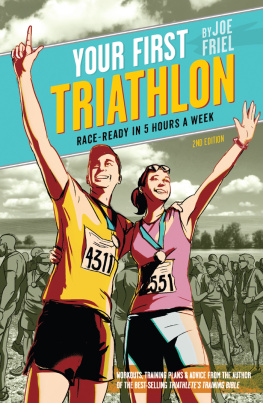
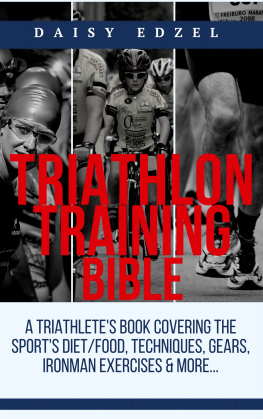
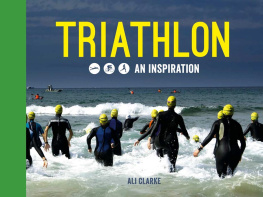


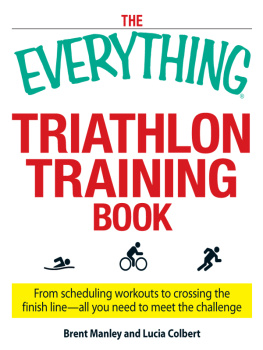

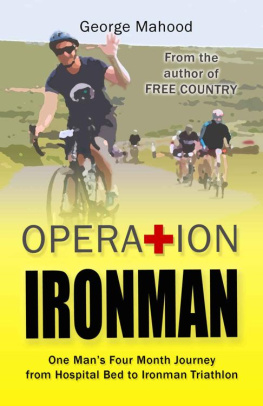
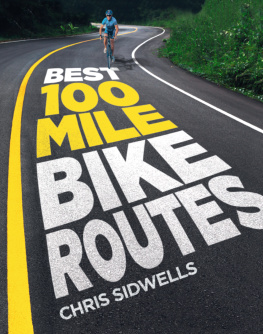


 The paper used in this publication meets the minimum requirements of American National Standard for Information SciencesPermanence of Paper for Printed Library Materials, ANSI/NISO Z39.48-1992.
The paper used in this publication meets the minimum requirements of American National Standard for Information SciencesPermanence of Paper for Printed Library Materials, ANSI/NISO Z39.48-1992.